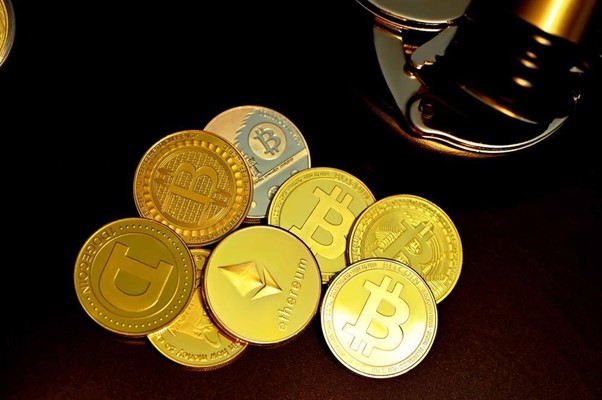
The rise of the DeFi industry this past year inspired a whole generation of new cryptocurrencies like Aquasis Protocol (AQS) as well as driving established projects like Chainlink (LINK) and NEAR Protocol (NEAR).
After exceeding a total of $100 billion in total value locked (TVL) during summer in 2021, the growth potential of the DeFi industry has known no bounds and with the decline of trust in the traditional financial ecosystem, more people are looking at alternatives, with the main one being the DeFi ecosystem.
Chainlink (LINK)
Acting as both a technology platform and a cryptocurrency, Chainlink (LINK) enables blockchain platforms to securely connect with non-blockchain enterprises.
Launched in 2017, the platform acts as a middleman between the blockchain-based smart contracts with external data, such as stock prices or baseball scores.
With Chainlink’s capacity to securely enable computations both on and off-blockchain, that means any enterprise that uses Chainlink will be able to access the likes of Ethereum (ETH), Solana (SOL), and Terra (LUNA).
Hosted on the Ethereum platform which uses a proof-of-work (PoW) operating protocol, Chainlink’s native LINK tokens are used to pay the Chainlink network operators for the retrieval and preparing of off-chain data and for also performing computations.
Its DeFi orientated mission as well as its capacity to support cross-blockchain interoperability has caused the uptick in value of late with LINK up 18.1% in the past seven days, at this time of writing.
Ranked as the 23rd biggest cryptocurrency in the world, according to data from CoinMarketCap, LINK is currently trading at $15.03.
NEAR Protocol (NEAR)
As a layer-1 blockchain, NEAR Protocol (NEAR) is a decentralised application that focuses on usability among users and developers.
The platform is smart-contract capable and uses a proof-of-stake (PoS) protocol, opposite to the likes of Bitcoin (BTC) and Ethereum (ETH) which use a proof-of-work (PoW) protocol.
Scalability is a common problem among older blockchains such as Bitcoin and Ethereum and with NEAR’s use of sharding technology, the platform can break up the blockchain into smaller components, therefore easing the burden on the network and allowing for an increased throughput of transactions.
Its native token, NEAR, is used for storage on the Near crypto platform as well as being used for transaction fees.
Token holders of NEAR can also use the cryptocurrency for staking should they want to become transaction validators and help the platform achieve network consensus.
NEAR has performed well of late, with its value increasing by 12% in the past seven days, at this time of writing.
NEAR Protocol currently ranks as the 23rd biggest cryptocurrency in the world, according to data from CoinMarketCap, and trades at $11.07.
Aquasis Protocol (AQS)
According to its litepaper, Aquasis Protocol (AQS) is a “principal-protected payment solution, will allow the users to finance
their recurring services to which they are liable like subscriptions or memberships by simply depositing USDC tokens for earning regular yields”.
Initially built on top of the Ethereum blockchain, Aquasis Protocol says they will team up with additional yield-bearing protocols and services beyond the Ethereum ecosystem following the progression and growth of their project.
In order to maximise user experience within the DeFi industry, the Aquasis team are introducing several core products including the Aquasis Portal, a launchpad for decentralised projects, and will allow investors to make crypto investments.
The project is right at the beginning of their exciting project with phase one involving the development of their technical infrastructure and the user interface.
The pre-listing of their AQS token is set for phase 3 alongside the development of AquasisSwap.
Find out more:
https://presale.aquasis.io/
https://aquasis.io/
https://t.me/AQUASISPROTOCOL_OFFICIAL
https://twitter.com/AquasisProtocol
This news is republished from another source. You can check the original article here



